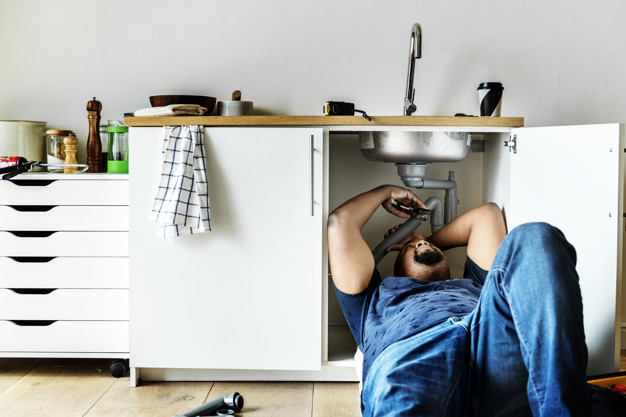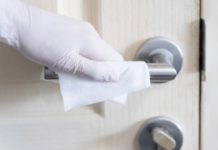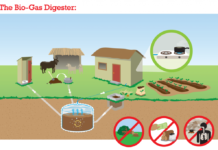Water damage is a serious thing. Not only can a plumbing disaster cause massive damage to your pipes and structure of your home, but it can destroy furniture, electronics and other personal belongings. Those family photo albums, recipe books, and heirlooms can’t be replaced no matter how great your insurance policy is.
If you think it can’t happen to you, consider this: according to industry research, over a third of Kenyan homeowners have suffered some form of water damage.
But water damage isn’t the only concern homeowners face when it comes to their plumbing. Water waste is a huge and expensive problem in America. A dripping faucet or running toilet can lead to thousands of gallons of water wasted in a year. It’s bad for the environment, and bad for the wallet.
So what can you, the homeowner, do to maintain healthy plumbing in your home? Here we’ll tell you what to look out for, what you can fix yourself and when to bring in the professionals.
See Also: Plumbing Problems to consider before buying a home
Fix That Running Toilet
Chances are you’ve experienced a running toilet at some point in your life. While jostling the flush lever can temporarily get rid of the annoyance, leaving your toilet in less than working order can lead to significant water wastage over time.
That doesn’t mean you have to send for a plumber. If your toilet is constantly running, most of the time there’s an easy fix. With some common household tools and a few adjustments you can save a bunch of water.
Keep Your Toilet Clean and Clear
Along the inside of your toilet’s rim are tiny little jets that play an important role in the flushing process. Without proper upkeep, these jets can get blocked with mineral buildup and bacteria. Cleaning your toilet once per week will keep things running smoothly (and get rid of disgusting germs and bacteria).
While we’re still on the toilet talk, be careful what you flush. If it’s not toilet paper or you didn’t produce it “naturally,” don’t flush it. Your pipes and your plunger will thank you.
Put Your Kitchen Sink On Diet
Some things just aren’t meant to be ground up in your sink.
What should you avoid feeding your kitchen sink? Starchy foods like pasta, rice and potatoes (even the peels) can expand in your pipes and lead to clogs. Fats like oil and grease can turn solid after they’ve gone down the drain and lead to buildups that are hard to clean. And no bones, please (did I need to mention that?)
Another crucial kitchen sink rule: use cold water. Coldwater keeps your blades sharp and keeps oils moving through your plumbing network, avoiding buildup. Keep the cold water running for a minute or two after you turn off the disposal.
Conquer Clogs Without Chemicals
Hair, soap and other debris can clog up your drains. When water starts to back up in your sink or pool in your shower, it’s tempting to pour one of those liquid drain cleaners down the drain and call it a day.
These products are marketed as a quick fix for annoying clogs. But what isn’t advertised is how damaging they can be for the environment, for your health and the health of your pipes.
To get rid of clogs and keep your plumbing in good shape, use a plunger or a drain snake instead. If you end up with a really tough clog and you aren’t afraid to get your hands dirty, you can even remove the p-trap from under the sink and clean it yourself, as seen in this video:
Get Your Plumbing Ready for rainy season
When temperatures start dropping, it’s time to winterize your plumbing network. When water freezes, it expands. If you don’t have a device that monitors the temperature in your pipes, you might not even know it’s happening. Get some frozen water in your pipes and you could end up with a serious problem on your hands.
Start by making sure any hoses you have are disconnected from the faucets outside your home, and all shut-off valves are closed. If you have any exterior pipes, get them wrapped up in foam insulation. You can find this at most hardware stores.
If you plan on skipping town and heading toward warmer climates for an extended period of time, you can take a few steps to reduce the chances of a pipe bursting while you’re away.
Before you leave, shut off the water main to your house. Find the faucet that is furthest from your main and let it run to drain all the water from your pipes. As a final precaution, keep your thermostat up around 60 degrees.
Keep an Eye on Your Water Pressure
Most people think that the higher their water pressure is, the better. It’s true that getting into a shower with low pressure isn’t the best way to start the day. And a sudden drop in pressure could mean you’ve got a clogged pipe somewhere. But too much water pressure can be a bad thing.
When your water pressure is too high, your entire plumbing system is under constant stress. Over time, those pipes and joints that keep everything flowing can start to break down. But how do you know if you have too much pressure?
If it seems abnormally high, you can go out and get a pressure gauge from a hardware or home improvement store. These gauges just screw right onto an outside faucet or the draw-off next to your water main for an instant reading.
Your water pressure should be between 40 and 80 psi (45 is actually the standard). Anything above that and you’re exposing your pipes to unneeded wear and tear. You can fix this by having your plumber install a pressure reducing valve on the water main. This will regulate the pressure of the water coming into your home.
Consider an Annual Checkup
Your home’s plumbing network is a lot like your car, your body or your teeth. Nothing works better to maintain health and longevity like regular, preventative maintenance.
Most plumbing companies offer annual maintenance. They’ll check your plumbing network from top to bottom, going over all the things mentioned here and more. Toilets, faucets, drains, water pressure and the health of your pipes will all be checked by a seasoned plumbing professional
If they find any issues, they’ll advise you on the next steps to take to insure your home’s plumbing system can get back to optimal health. It’ll also give you some records to show your insurance company if you’re ever struck by a water disaster in the future.
Tiny Leaks Turn Into Huge Problems
Small leaks have a habit of sneaking up on the most diligent of homeowners. Sometimes tiny leaks leave tell-tale signs like a discoloured spot forming on a ceiling or wall. Other times, you might not even know they’re happening. Even the tiniest leak can add up to a huge amount of wasted water, leaving you scratching your head at your rising water bill.
If you have a small leak that has gone undetected and unaddressed for a long stretch, you might be out of luck with your insurance company. Homeowners insurance usually doesn’t cover water damage caused by plumbing issues that persist over time.
Not only that, small leaks can start rotting away your home’s wood frame or even cause toxic mold to start spreading.
The good news is, even those invisible leaks can be sniffed out easily. Make sure all your faucets and water-using appliances are turned off and check your water meter (next to the water main). Give it 30 minutes to an hour and check the meter again to see if it’s gone up. If it has, you’ve probably got a small leak somewhere.
So do your wallet and your lungs favour. Stay on top of small leaks.














